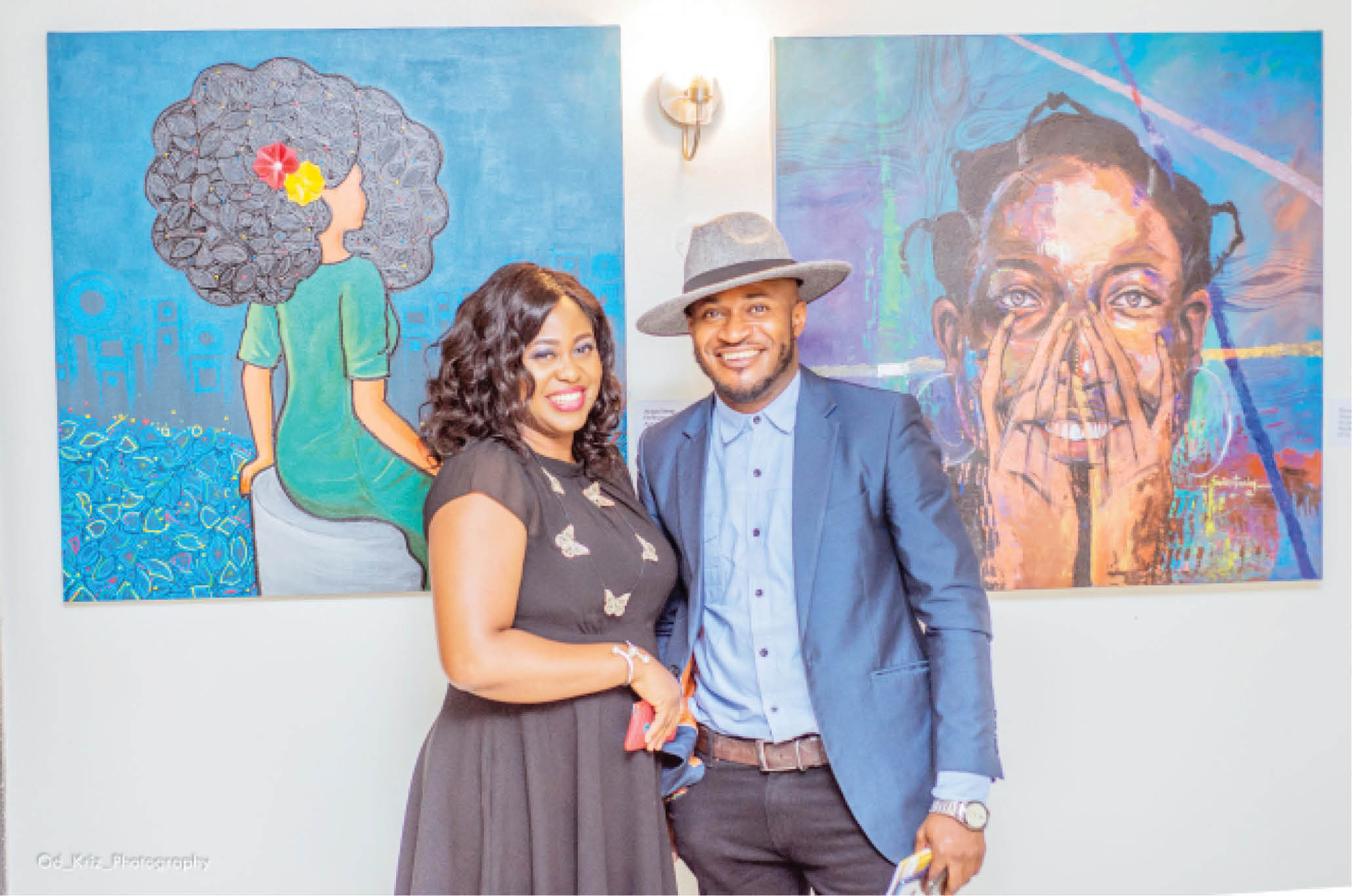Nnaji, Ezeh collaborate for ‘Vivid Immersion’
Abuja-based artists, Abigail Nnaji and Stanley Ezeh, teamed up for an exhibition, ‘Vivid Immersion’ which opened on June 12, at the Bouygues Club House, Abuja. Over 40 works are being displayed expressed in various media from acrylic, watercolour, mixed media and ink. Although both artists are graduates of the Department of Fine & Applied Arts […]

The artists, Abigail Nnaji and Stanley Ezeh
Abuja-based artists, Abigail Nnaji and Stanley Ezeh, teamed up for an exhibition, ‘Vivid Immersion’ which opened on June 12, at the Bouygues Club House, Abuja.
Over 40 works are being displayed expressed in various media from acrylic, watercolour, mixed media and ink.
Although both artists are graduates of the Department of Fine & Applied Arts of the University of Nigeria Nsukka (UNN) and have the same ideological foundations, their works had their unique identities as creatives.
For Nnnaji who is inspired by lines and fascinated by colours, her works depict everyday life as she tries to capture beauty and nature in the midst of human struggles. She achieves this, using abstract and semi abstract styles of painting to create a mix of lines, colours and traditional motifs as is vivid in her 15 exhibited works.
Nnaji explained that, “I usually try to create my work in my own way. The facial features are in most cases, determined by the piece I am working on and the theme. The focus is not on their faces but on a more definite feature like the hair and in the book, as in the case of the ‘Blue book.’ My focus is the book not the reader’s face; that’s why it is blank.”
Serializing her works in a way that tells a story and allows for continuity, as well as for the audience to follow the narrative, also makes creating them easier.
“I see it like giving birth to a child. The child grows and has different stages of his or her life and each stage has something to look forward to,” Nnaji said.
Adding that, “I enjoy the excitement of creating my works this way because it also keeps me emotionally connected.
“The ‘Afro’ series is a sequel to an earlier one I did, ‘Underneath the façade.’ It was a story of women trying to look perfect in society in spite of their many challenges. The hair is a part of her beauty, but it is exaggerated. It covers her face, in a way that you can’t see all that she is going through or her emotions.
“In ‘Afro’ I altered this because I wanted something more specific. It is the same with my use of the umbrella as a symbol of protection.”
Full time studio artist, Stanley Ezeh, who is a painter, sculptor, creative writer and watercolourist, exhibited 16 works and some miniature pieces.
Ezeh known for his ability to use a variety of materials from clay to fibre, metal and cement, among others, as language and tool for his work, this time only let out his painting side, showing works which dwell on trauma, hope and resilience.

Having first studied sculpture at the Institute of Management and Training (IMT), Enugu, before going on to UNN, Ezeh, effectively shows his mastery of both art forms in the works he exhibited.
His piece, ‘Rejuvenation’ and the seemingly pregnant ‘Radiance of Hope’ were two that particularly showed off his skills and drew guests in.
He explained that, “‘Rejuvenation’ is a piece born out of habits around making New Year resolutions, which for many, is an opportunity to be reborn and start new ways, new life.”
In ‘Radiance of Hope’ the artist uses leaves, infused in the female reproductive process, which seem to be replicated in a manner that comes across as saying hope never dies.
The colour red, features in all of the artist’s works, even if only as specs.
He said, “I use red a lot. In Nigeria we are prone to violence and atrocities in the name of earning a living. The colour red stands for things that fight against life and are a threat to it.”
His masquerade series are based the myths associated with them and their cultural significance.

Speaking on his preference for acrylic over watercolour, Ezeh said, “I find acrylic easier to control than watercolour. Also, acrylic works are easier to maintain and don’t require the glass framing and care of watercolour works.
While both artists presented works which carry their unique signatures, it was impossible to miss elements of the works influenced by things like ‘uli’ lines which the Nsukka art school is famous for.
They have both exhibited together before at the ‘Abuja Unlocked’ exhibition, ICAF exhibition and the ‘Nkolika’ exhibition in commemoration of the Golden Jubilee of the Nsukka Art School.
Danielle Fichter, who created the platform for Abuja artists to exhibit at the venue said in her foreword of the exhibition brochure, that the city’s breaming artists created the backdrop to present a forum for exchange between the creative person and the viewer. It is this that has led to the use of the club house as venue for exhibitions which have now become almost a monthly affair.
The exhibition ends on Tuesday.

